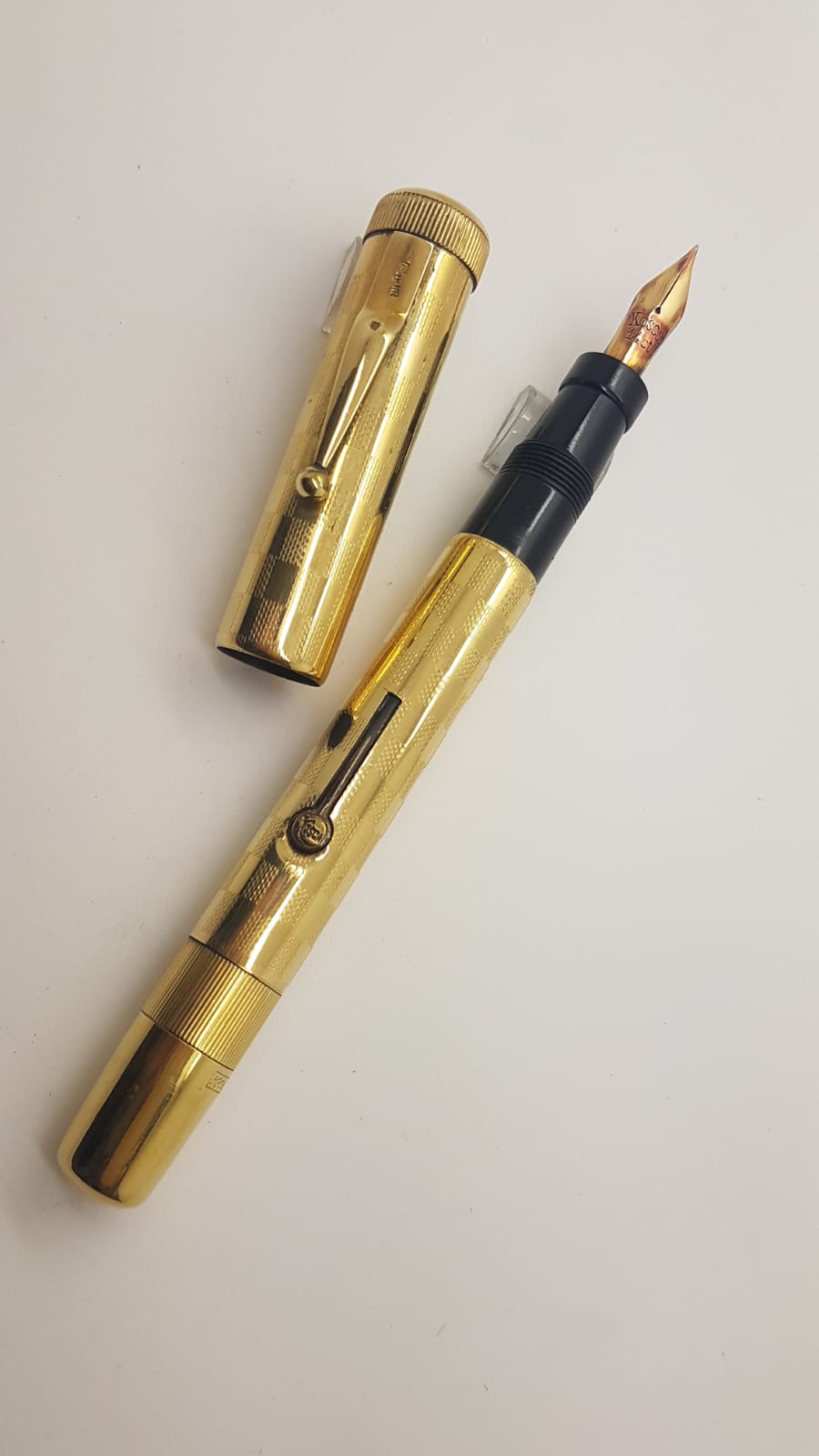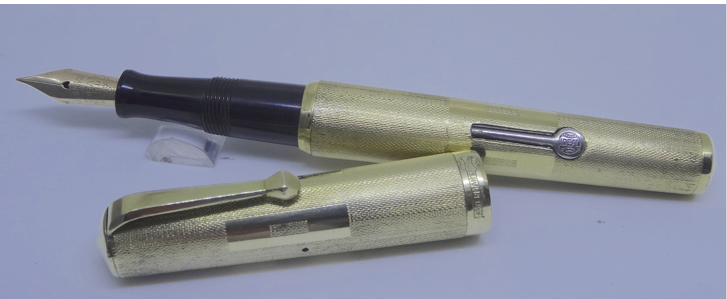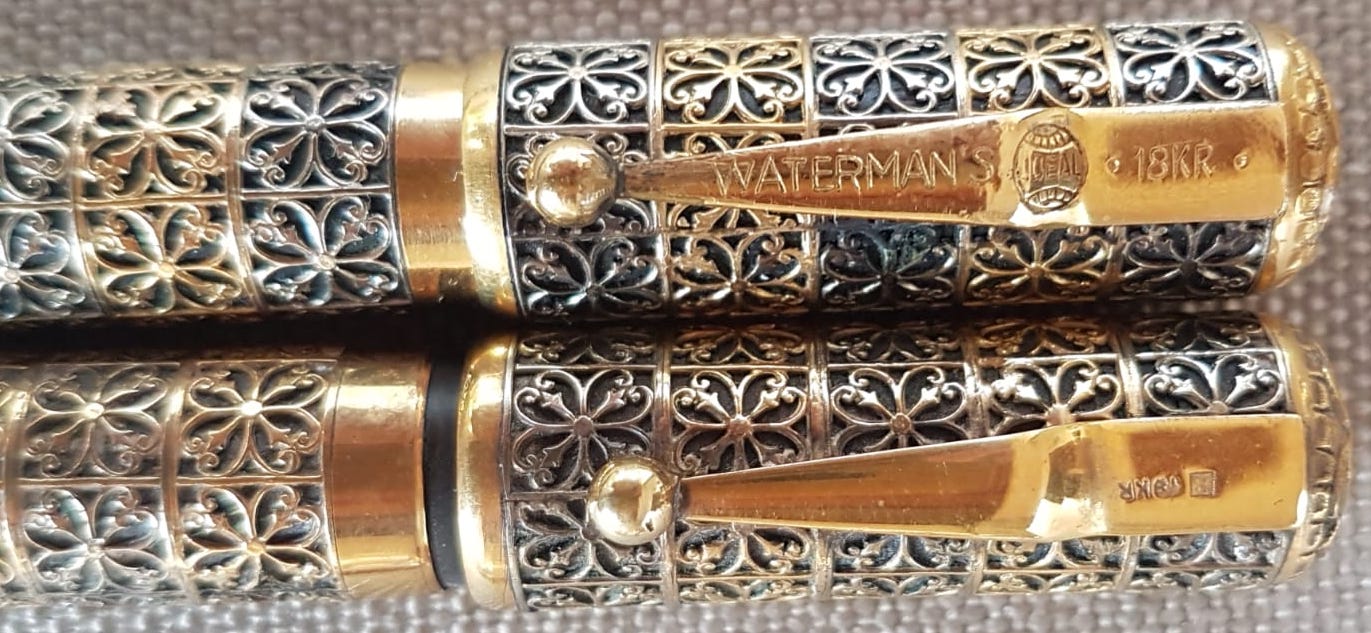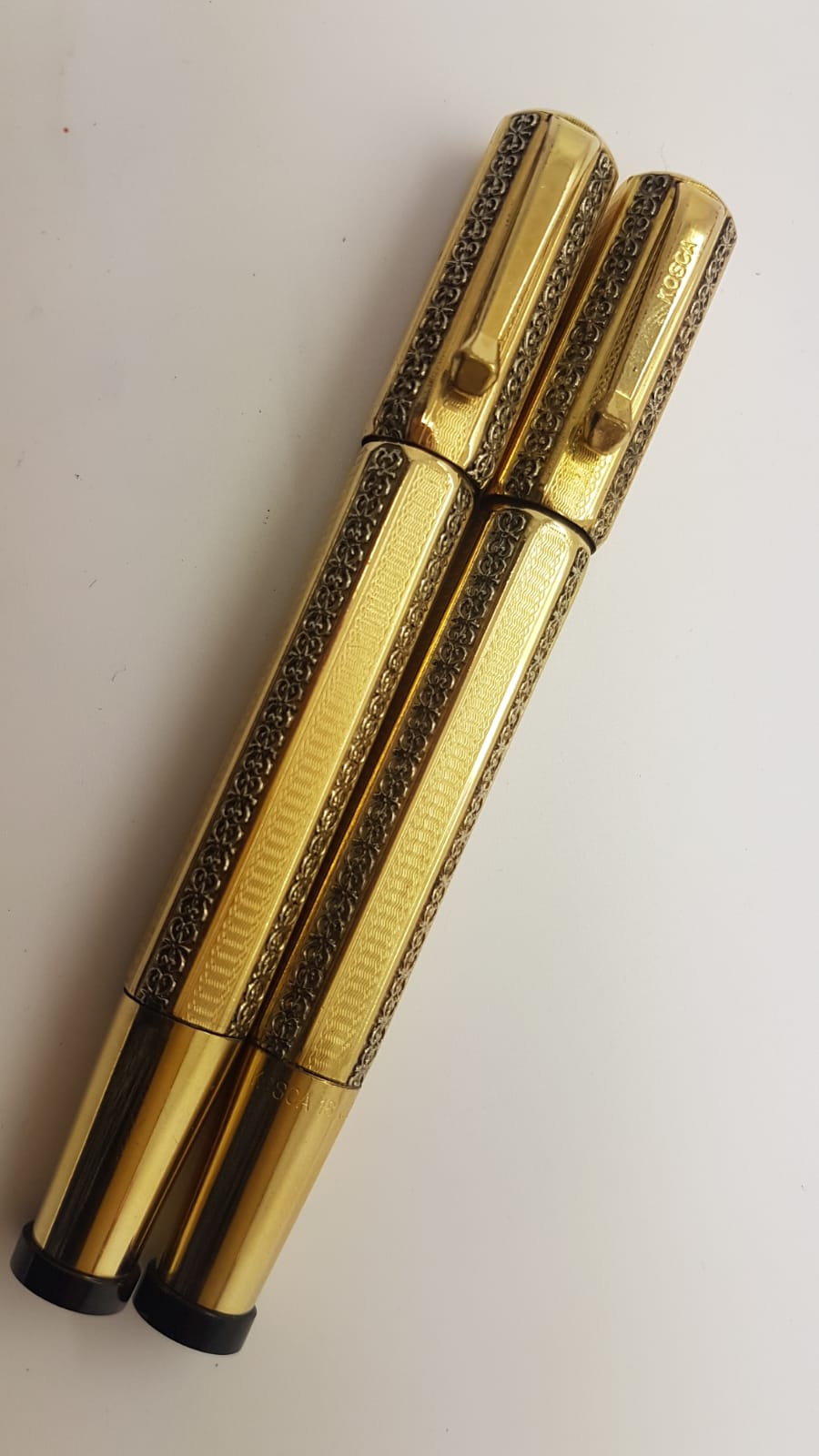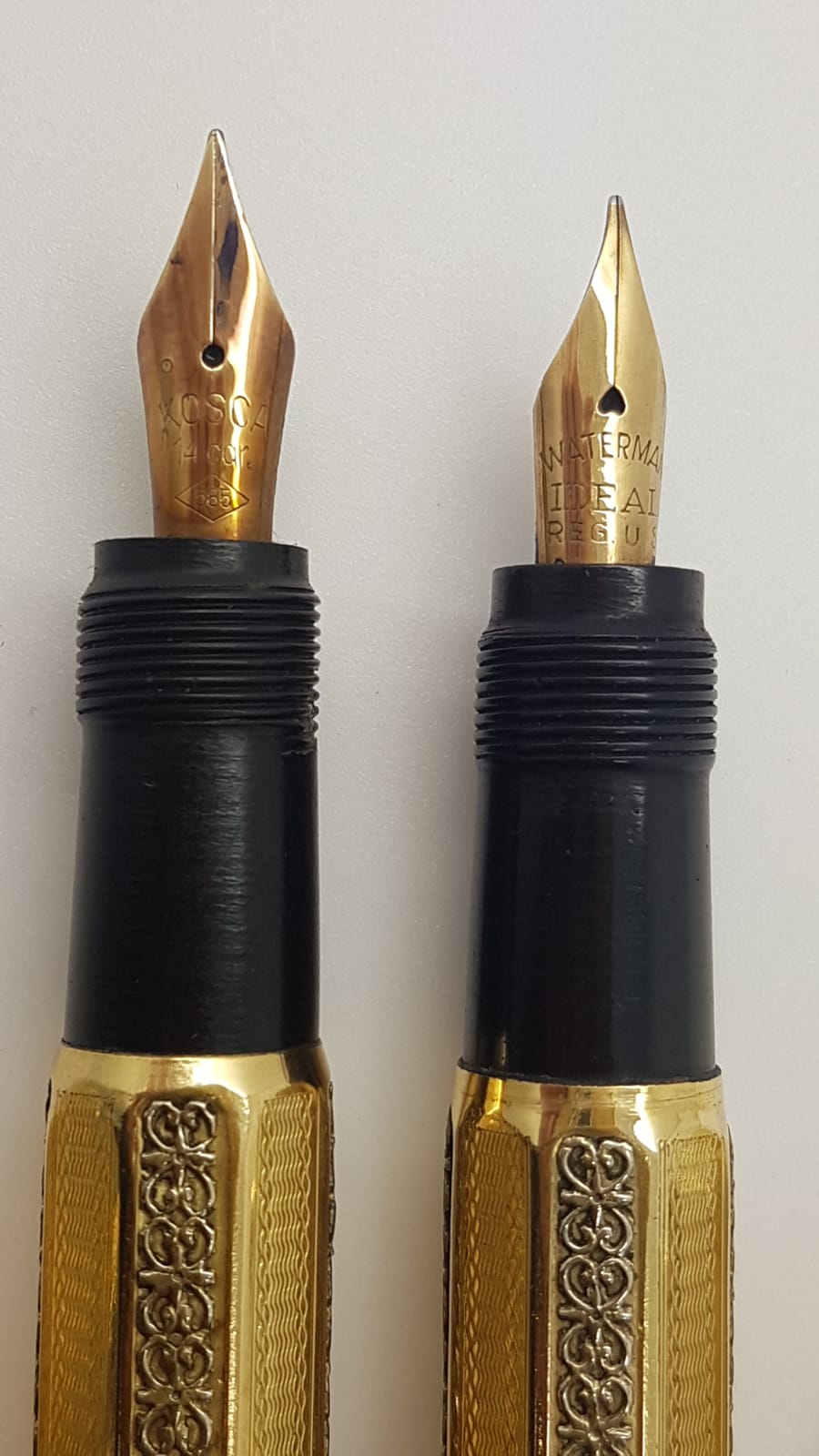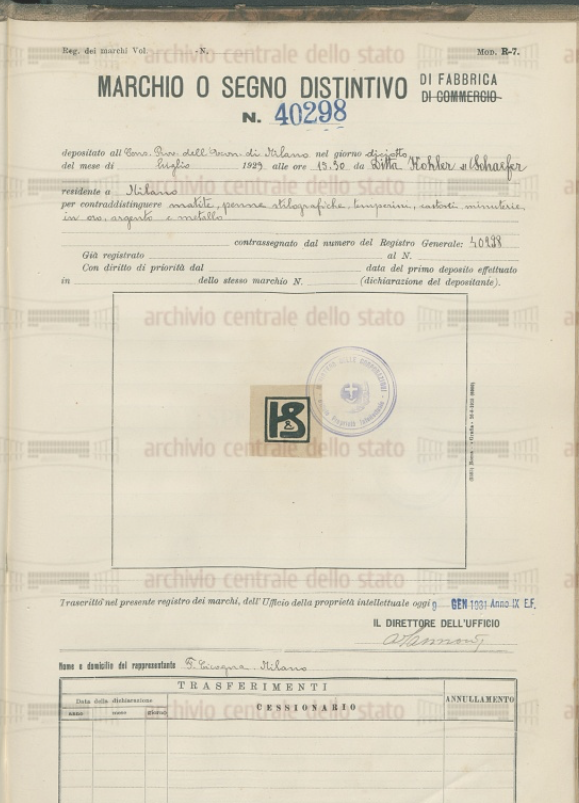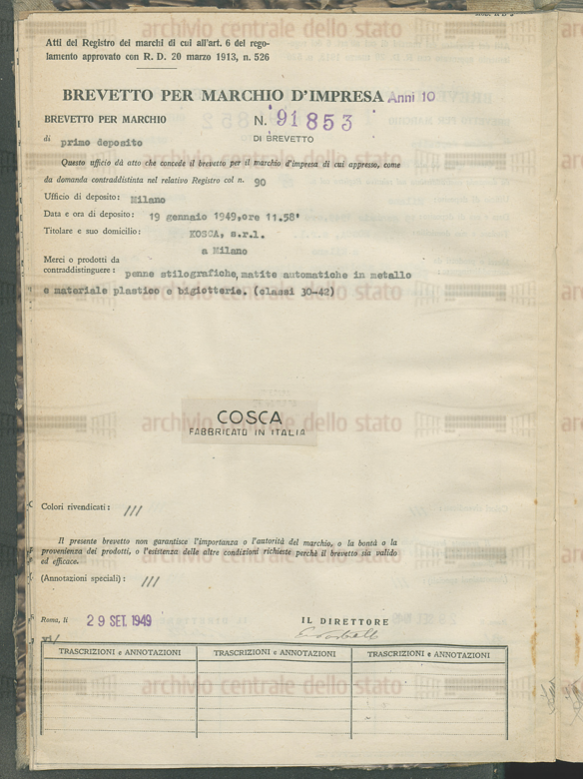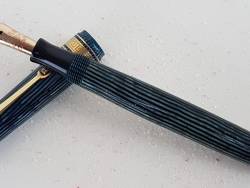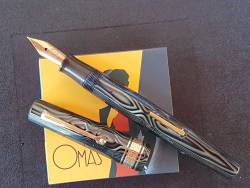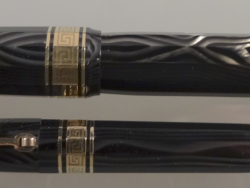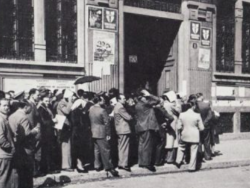KOSCA: Updating and additions
The access to the Italian State Trade Mark and Patent Archives and the analysis of a number of pens with overlay have finally made it possible to clarify a few aspects relative to the Milan-based Kosca Company and its production. The chapter about this Company, founded by P. Kohler and C. Schaefer (Vol. I pagg. 269/272) can therefore be enriched with new details and some new interesting information.
The first trademarks to be registered by the Company were “Spezial Super” and “Spezial”: they were both registered in 1929. These two trademarks were used on safety pens with overlay of very high quality. All “Spezial Super” and “Spezial” pens I have seen in many collections are top quality pens. In many cases the patterns of decoration used on these pens are identical to Waterman’s.
Picture below: Spezial Super with helicoidal two tone overlay.
Along with the above mentioned trademarks, Kohler and Schaefer registered a peculiar logo which has arisen collectors’ curiosity for many years: it is composed by the capital letters “K” and “S” united by the “&” symbol. This hallmark, which sometimes can be very difficult to make out, especially on 18 KR overlays, can be found on nibs, overlays of fountain pens and pencils and sometimes on their clips. It can be found as part of the trademark “Spezial” and “Spezial Super” as well and on their gold nibs.
Other trademarks are connected with the Kosca Company: ”Kosca- Fabbricato in Italia “(1938), “Record - Fabbricato in Italia” and “Cosca”. The latter was registered in 1949 and it is essential to note that the word Cosca with the initial “C” is an italianized version of the original Kosca trademark, to make it probably more suitable for the Italian market.
All overlays produced by the Kosca Company are of the highest quality: overlays with “Kosca” engraving, often matched with the words: “Rivestimento Kohler and Schaefer “ (overlay by Kohler and Scheafer”), are as beautiful and as well-structured as “Spezial” or “Spezial super” overlays. It seems that the various trademarks do not identify major brand and/or subbrand, but simply the same products with different names, probably directed to different segments of the market.
Picture below: Kosca set from the 30's with Art Deco decoration
Picture below: Kosca set with Waterman-style overlay and Kosca Made in England 14 ct gold nib.
The review on Kosca pens would not be complete if overlays made on commission for Waterman and Parker were left out. During the 30s and 40s the Company produced high quality overlays for these two big companies, to be used on various models. Parker had their Parker 51’s overlays made by Kosca in the 1940s but a number of earlier models exist which were embellished with Kosca overlays. Waterman commissioned overlays to Kosca to be used on safety pens and on a few other later models, including lever fillers of the 5X series, Taperite and a few students’ models of the late 1940s. It is not uncommon to find the same pattern of decoration used both on Kosca/ Spezial Super/ Spezial pens and on Parker or Waterman models.
In the pictures below a Parker 51 set and a Kosca button filler which show exactly the same pattern of decoration on the overlay and a Waterman 52 with Kosca overlay from the late 1930’s
The following pictures show two safeties with identical filigree overlays, one is a Waterman 42 and the other is a “Spezial Super”. The difference in length is simply due to the positioning of the inner cap. The overlays are absolutely identical and two identical safety pens were used. The Spezial Super has not the “42” engraved below the turning knob.
A final consideration on Kosca nibs. Many variations are known of Kosca 14 ct gold nibs. Some of them show a "Made in England" engraving, others have a peculiar drop shaped vent hole, others have the name Kosca in capital letters. The company probably did not produce its own nibs and had various suppliers, which should explain such a variety of styles and shapes.
The following images show the original registration documents relative to the various trademarks belonging to the Kosca Company








